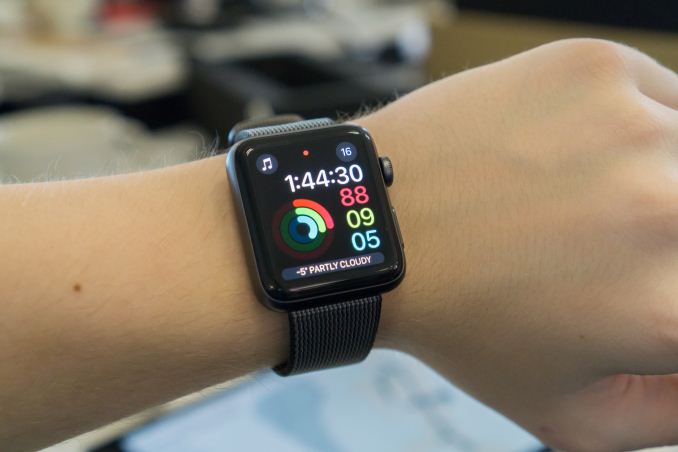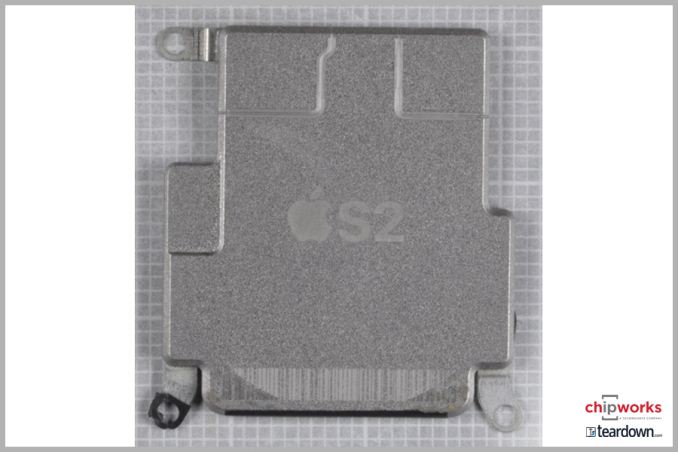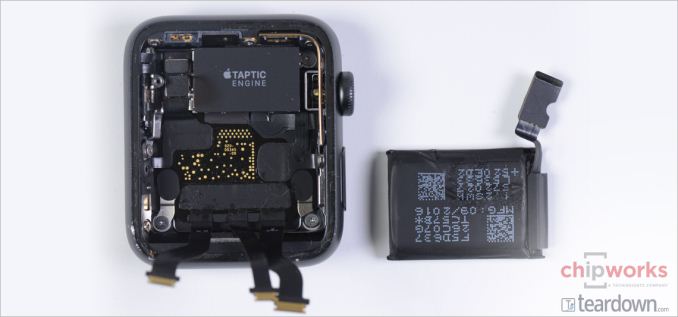The Apple Watch Series 2 Review: Building Towards Maturity
by Brandon Chester on December 20, 2016 8:00 AM EST- Posted in
- Wearables
- Apple
- Apple Watch
- Apple Watch Series 2

Back in the first half of 2015 Apple released the first version of the Apple Watch. The Apple Watch was a long-rumored product, often referred to as the iWatch before its release. At the time, it represented the best attempt that I had seen to provide a compelling smartwatch experience, but it was clearly a first generation product with flaws and shortcomings. It was not unlike the iPhone 2G or the iPad 1 in that regard, and for all the things it did well, there were other parts of the experience that really didn't deliver. While this shouldn't have been unexpected given the nature of first generation products, when a device is surrounded by so much hype for so many years, expectations can begin to run wild. On top of that, certain aspects like application performance were not up to the standards that are expected of a shipping product. In our review of the original Apple Watch we concluded that it was a good first attempt, but obviously flawed, and that ordinary consumers should wait for future iterations.
Jumping to the present, Apple is back with the second generation of the Apple Watch, the aptly named Apple Watch Series 2. The launch of Apple Watch Series 2 comes two years after the original announcement of the Apple Watch. Even when you consider the six month gap between the first Apple Watch's announcement and launch, this still represents a longer time between versions than the yearly cadence that we've come to expect for many other products. Having a product in the market for one and a half years is a good span of time to observe how users are making use of it, what features they are and aren't using, and what parts of the experience create friction. For a first generation product this kind of information is essential to make the necessary improvements in future iterations, as taking the product in the wrong direction could doom its future prospects entirely.
In addition to the improvements made in watchOS 3, Apple Watch Series 2 includes a number of hardware improvements. While one might think that specs are entirely irrelevant in a smartwatch, that actually couldn't be farther from the truth. Many of the issues with the original Apple Watch stem from various limitations in the hardware, particularly the slowness of the CPU and GPU. With Series 2 Apple has a chance to address many of these problems. I've compiled a table below with the specifications of both sizes of the original Apple Watch compared to their successors in Series 2.
| Apple Watch 38mm | Apple Watch 42mm | Apple Watch Series 2 38mm | Apple Watch Series 2 42mm | |
| SoC | Apple S1 CPU: 520MHz Cortex A7 GPU: PowerVR Series5 |
Apple S2 CPU: 2 x 520MHz Cortex A7 GPU: PowerVR Series6 'Rogue' |
||
| RAM/NAND | 512MB LPDDR3 (?) RAM / 8GB NAND | |||
| Display | 1.32" 272x340 OLED 450 nit brightness |
1.5" 312x390 OLED 450 nit brightness |
1.32" 272x340 OLED 1000 nit brightness |
1.5" 312x390 OLED 1000 nit brightness |
| Size / Mass | 38.6x33.3x10.5mm 25/40/55g (Alu/Steel/Gold) |
42x35.9x10.5mm 30/50/69g (Alu/Steel/Gold) |
38.6x33.3x11.4mm 28.2/41.9/39.6 (Alu/Steel/Ceramic) |
42.5x36.4x11.4mm 34.2/52.4/45.6 (Alu/Steel/Ceramic) |
| Water Resistance | IP67 "Splash proof" | Water resistant up to 50 meters | ||
| Battery | 0.78Whr | 0.93Whr | 1.03Whr | 1.27Whr |
| Connectivity | 2.4GHz 802.11 b/g/n + Bluetooth 4.0 | 2.4GHz 802.11 b/g/n + Bluetooth 4.0, GPS | ||
| Launch OS | watchOS 1 | watchOS 3 | ||
| Price | $349/549/10,000 (Alu/Steel/Gold) |
$399/599/12,000 (Alu/Steel/Gold) |
$369/549/1249 (Alu/Steel/Ceramic) |
$399/599/1299 (Alu/Steel/Ceramic) |
The exterior design of the Apple Watch is clearly something that has been locked in for several generations. As you can see above, Apple has increased the size of watch slightly with Series 2, but it's not something that can really be noticed in practice, and it doesn't break compatibility with existing watch bands which is good news for anyone upgrading from the original Apple Watch. The water resistance of the case is also greatly improved, having gone from the vague "splash proof" rating in the original model to being rated for water resistance up to a depth of 50 meters. The jewelry-focused gold Edition models are also gone, replaced by a ceramic model at 10% of the price.
Apple S2. Source: Chipworks
Internally, Apple has made some key changes that have a profound impact on the user experience. The most obvious is the new chip powering the watch. Apple's S2 SiP now has a dual core processor and an improved GPU. Apple rates it as 50% faster for CPU-bound workloads, and twice as fast for GPU-bound workloads. Apple has been known to state smaller gains than the theoretical doubling of performance when moving from a single core to a dual core CPU, and based on some investigation it appears that Apple has simply doubled up on CPU cores, adding another 520MHz ARM Cortex-A7 core to complement the first. Single-core/single-threaded performance appears unchanged, so getting better performance out of the S2 means putting that second core to work.
As for the GPU, this is much harder to pin down. It's most likely the case that the Apple S1 SiP used the PowerVR GX5300 GPU, and I suspect that Apple is using Imagination Technologies' newer PowerVR "Rogue" architecture - likely some variant of the G6020 GPU - in the Apple S2. I say variant, as Apple's recent work with GPUs in their SoCs could be indicative that Apple does not need to use Imagination's reference design.
Like the S1, the S2 is paired with 512MB of RAM. It's again hard to verify that this is LPDDR3 memory so I've marked that as speculative in the chart. I did want to note that other sources have reported 1GB of RAM for the S2, but I am fairly sure that this is not the case. iOS, and subsequently watchOS, provides an API for developers to query the number of CPU cores and amount of RAM available in the device, and it confirms that Apple has not increased the amount of RAM available in Apple Watch Series 2.
Apple Watch Series 2 42mm battery. Source: Chipworks
Another major internal change is the battery. Apple has increased the battery capacity on the 38mm model by 32%, and the 42mm model by 36%. This will do well to offset the increased power requirements with the introduction of GPS in the Apple S2 SiP. Apple still rates the battery life for Series 2 at eighteen hours, and in my experience you could wear the watch for two days before having to recharge as long as you don't do too many workouts. However, I still charge it each night, and we're still not close to the point where you can wear a smartwatch for a week with both daytime tracking and sleep tracking.
The last major hardware change in Series 2 is the display. Apple still uses a 326ppi OLED panel on both models, with the 38mm casing having a 1.32" display and the 42mm casing being a larger 1.5" display. What has changed is the peak brightness. One of the issues I encountered with the original Apple Watch was an inability to see what was on the screen when there was heavy glare. This was even more pronounced on the steel versions that use sapphire glass, which is more reflective than the Ion-X glass on the aluminum models. Apple rated the original Apple Watch displays at 450 nits of brightness, and with Series 2 they claim to have increased this to 1000 nits, which is an enormous improvement.
Given that the Apple Watch is still a relatively new product, it's likely that many people have still not interacted with one before. Because of that, and the very personal nature of watches, it's worth covering the design in more detail, and so I'll talk about that next.












126 Comments
View All Comments
wumpus - Wednesday, December 21, 2016 - link
Can you program it at all?All I need a "smart watch" to do:
Start/stop a run tracking app.
Optional extras (biggies):
display time elapsed during run
cycle between time/heart rate/pace
show current time when not running (especially if insufficiently clunky)
display phone number/name of whose calling
I might find other apps after purchase, but those are the issues I need. Pebble was launched primarily on runkeeper integration, but failed hard (especially hard is the start/stop functionality: being able to lock your phone and put it in your pocket would be key.
michael2k - Tuesday, December 20, 2016 - link
By that measure, why buy an iPhone when you've got $400 laptops and $99 Android phones?sadsteve - Tuesday, December 20, 2016 - link
Heh, I didn't buy an iPhone. My new laptop was $650 (had separate graphics card with 2GB memory) and my Android phone was only $29.Ratman6161 - Tuesday, December 20, 2016 - link
You are asking the wrong question :). The question (for people who already own iPhones) is why buy the watch when I already own the iPhone? Keeping in mind the reviewer makes a fairly extensive case to say that the watch is an extension of the phone and not a stand alone device. So the question is, what does the watch add to the overall picture? By the way, I'm a Samsung phone user (Note 5) but I'm not buying the Samsung watch either.So what does it add to the experience? What I'm mostly interested in is fitness tracking. I could see how such a thing, or a fit bit etc could be helpful to someone just getting started. But for those of us who have been at it (fitness) for a while - going on 20 years for me - all I need is a simple heart rate monitor and I don't even use that all the time. After a while you get to know what a certain heart rate feels like based on breathing and don't really need the readout except as an occasional check. On my bike, I need speed, distance and cadence in addition to hear rate. Speed and distance could be calculated from GPS data but cadence (rotations per minute of the crank arms) has to come from a sensor on the bike. The racers and others more hard core than me also measure their power output. I don't see anything like a smart watch being able to really replace a specialized bike computer.
I also don't want one expensive device that isn't useful without also having a different expensive device.
Ratman6161 - Tuesday, December 20, 2016 - link
PS: OK, I know this is a personal bias. But my first thought when I saw the picture at the beginning of the story was "it looks like a cartoon".Cliff34 - Wednesday, December 21, 2016 - link
Personally, I don't need all the data to track speed, HR and distance. I used to do triathlon and thos things matter bc I need to know how far and fast I am training.But for the everyday user, where fitness is more for health reasons rather than athletic performance, it is a bit over kill.
Sure you can be the data geek to find out and graph how much training you've been doing. But the data is more to show than for actual athletic improvement.
During my triathlon era, we often joke that the time we spent tracking and 'analyzing' our data can be better spent putting in more hours to get the body fitter (and faster).
Right now, i am not training to race now. So i just run or exercise however I feel like it. The only data i track is my time and that you don't need any fancy gadgets.
rhysiam - Wednesday, December 21, 2016 - link
While I agree that all the fitness tracking features are "a bit overkill", in the end of the day loads of people find them helpful. It's not really about the tracking data, it's about the reward system such data makes possible. From a psychological perspective, gaining rewards, however trivial, ultimately reinforces our behaviours. There is a whole industry of repetitive, reward based games that tap into this (Pokemon GO being the most successful example of late).Fitness trackers, settings goals, gaining rewards, etc., are mostly based on a similar behaviour -> reward -> behaviour loop. While I'm sure we'd all love to be entirely self motivated and not require any external rewards, in the end of the day if those things help some people get up and active instead of hitting the snooze button again, or just staying in front of a screen, who really cares?
Flunk - Tuesday, December 20, 2016 - link
Not that many people do, Apple controlled a shrinking 11.7% of the smartphone market as of Q2 2016.IDC: http://www.idc.com/prodserv/smartphone-market-shar...
KoolAidMan1 - Thursday, December 22, 2016 - link
And yet they still dominate app revenue, mobile ad revenue, mobile internet traffic, and smartphone profits.Whoever is buying those iPhones is using them a hell of a lot more than whoever is buying whatever else is out there, that much is clear.
jospoortvliet - Sunday, December 25, 2016 - link
I would guess this has something to do with the big 'installed base' and longer life cycle for iPhones. Also because their owners are more likely to be well off (iPhone markets hare is higher in the us than India or afrika -- surprise).And absolute sales is the decreasing, relative sales is. There is a shift, though, with some countries selling very few iPhones to the point where local app development for Apple becomes less of a priority (Spain is an example). This is of course a risk for Apple- if they loose their spot of top app development target or even become not-a-target they will fall in a vicious circle of people not buying their device especially for lack of apps and developers not developing for lack of users. They are not there yet is most of the world but in some regions, as I said- getting close.